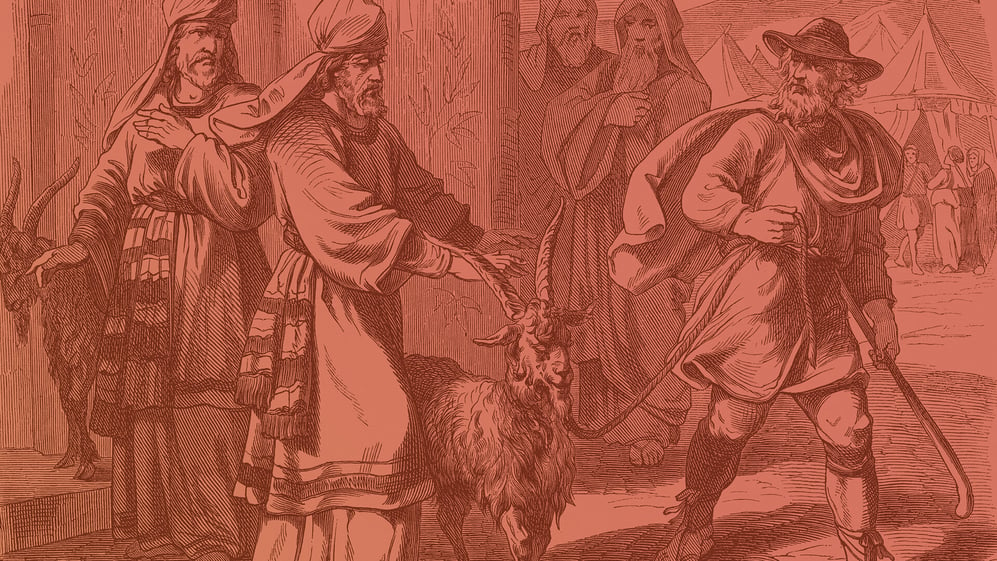Jesus was cast out that sinners would be welcomed in.
After illness and death, perhaps the greatest COVID-related challenge is isolation. People living normally social lives have sequestered themselves in their homes to avoid the illness. Those in hospitals and nursing care facilities have endured months without visits from family and friends. Some have passed away without the comforting presence of loved ones. Beyond COVID, isolation remains troubling. Criminals are housed in prison. Spouses divorce. School children bully and reject each other. Teachers place unruly students in detention. Each of these examples illustrates a disquieting, but ultimately comforting concept in Christianity.
Study
“And when he has made an end of atoning for the Holy Place and the tent of meeting and the altar, he shall present the live goat. And Aaron shall lay both his hands on the head of the live goat and confess over it all the iniquities of the people of Israel, and all their transgressions, all their sins. And he shall put them on the head of the goat and send it away into the wilderness by the hand of a man who is in readiness. The goat shall bear all their iniquities on itself to a remote area, and he shall let the goat go free in the wilderness.” Leviticus 16:20-22
At the first Passover, as God orchestrated release from slavery for the people of Israel, our Lord instructed the Hebrews to slaughter a lamb without blemish, and then to spread its blood on the doorpost and lintel of their home. As the Hebrews wandered in the desert, God continued to give instructions regarding sacrifices and offerings to obtain forgiveness of sin. Most often, animals were to be slaughtered inside the Tabernacle, the movable tent used to sacrifice and worship. The above reading from Leviticus describes not a slaughtered sacrifice, but rather one cast out. Once Aaron, the high priest, placed his hands on the head of the goat, the animal now owned and bore the sins of the people. Aaron casts out the goat, reflecting God’s unwillingness to abide sin.
Reflecting upon this practice, keep in mind that the goat, although innocent, was made to suffer for the sins of the people, cast out from the camp never again to be welcomed in, and would be defenseless in the face of predatory animals. We observe direct connections to Jesus Christ’s passion. Many animals set aside for slaughter were to be without blemish. Jesus was sinless, without His own sins. Unknowingly, the Roman soldiers with their monstrous method of execution, bring the connection between the Old Testament scapegoat and Jesus’ torture. The soldiers fashion a crown of thorns pressed cruelly into Christ’ head, reminiscent of Aaron’s hand on the head of the scapegoat. Like the animals cast out to die in the wilderness, Jesus was forced to carry His cross outside the city to be murdered.
Our comfort is God’s forgiveness for the suffering of His divinely appointed Scapegoat. Because Jesus was cast out, sinners are welcomed back into God’s loving presence, accepted into “Jerusalem” once again. Lutheran worship reflects this. At the outset of the service, sinners confess their sins and are declared forgiven by the pastor for the sake of Jesus Christ. Once this occurs, the pastor moves up to the altar, signifying a return to the presence of God. Once again welcomed in, we now are prepared to receive the true body and blood of the Scapegoat, who conquered the hostile animals in the wilderness, rising to life to welcome sinners. We recall Micah 7:19:
“He will again have compassion on us; he will tread our iniquities underfoot. You will cast all our sins into the depths of the sea.”
Law and Gospel
As sinners are like the lepers cast out from the Hebrew community, only to be welcomed back in by declaration of restored health by the Chief Priest, we take great care to expect restoration to God’s presence through nothing but the work of the Scapegoat and declaration of forgiveness from God.
As forgiveness and salvation come only through faith in Jesus, we are to flee from sin, and anything else that would destroy this trust in Jesus, leaving us once again cast into the wilderness of eternal isolation and death.
As Paul charges that we are to make every effort to live in peace with one another, we are to extend forgiveness to those who sin against us, welcoming them once again into fellowship in our lives to the greatest extent possible.
As God declares that He will never leave us nor forsake us, that He will never lose one of His sheep, we are comforted knowing that as Jesus suffered the full crowning of sin, and was cast out into the wilderness, we are confident in God’s forgiveness, knowing that there is no sin that is not covered in Christ.
Tips for Teaching
1. Take students into the sanctuary and walk them up to the chancel. Explain the concept of separation from the altar due to our sin. Teach how Confession and Absolution bring us once again near the altar. Connect this welcome to the pastor's move toward the altar.
2. Provide paper cutouts of sheep onto which students inscribe his or her name. Provide like images of crowns and hands. Direct students to glue the crown and the hands on the head of the sheep, as a reminder of how God places His forgiveness on our heads for the sake of Jesus who set aside the thorns for the crown.
Confession and Absolution are staples of the Christian faith to teach to your confirmands.













